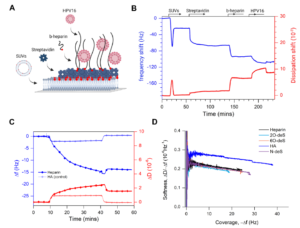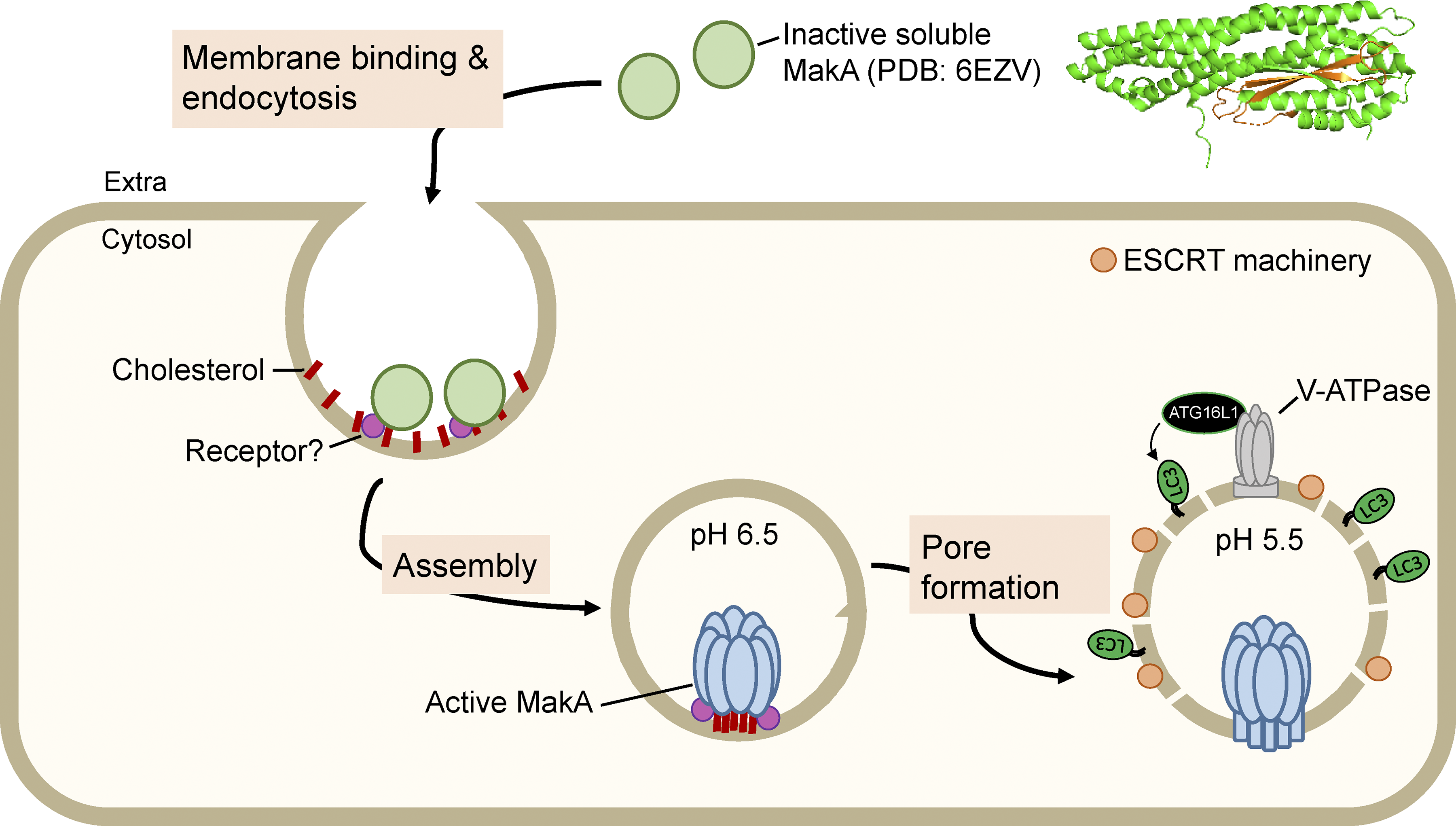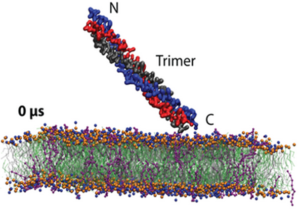Site-specific sulfations regulate the physicochemical properties of papillomavirus–heparan sulfate interactions for entry
Authors: Fouzia Bano, Laura Soria-Martinez, Dominik van Bodegraven, Konrad Throsteinsson, Anna M. Brown, Ines Fels, Nicole L. Snyder, Marta Bally, Mario Schelhaas
Journal: Science Advances
 Abstract: Certain human papillomaviruses (HPVs) are etiological agents for several anogenital and oropharyngeal cancers. During initial infection, HPV16, the most prevalent cancer-causing type, specifically interacts with heparan sulfates (HSs), not only enabling initial cell attachment but also triggering a crucial conformational change in viral capsids termed structural activation. It is unknown, whether these HPV16-HS interactions depend on HS sulfation patterns. Thus, we probed potential roles of HS sulfations using cell-based functional and physicochemical assays, including single-molecule force spectroscopy. Our results demonstrate that N-sulfation of HS is crucial for virus binding and structural activation by providing high-affinity sites, and that additional 6O-sulfation is required to mechanically stabilize the interaction, whereas 2O-sulfation and 3O-sulfation are mostly dispensable. Together, our findings identify the contribution of HS sulfation patterns to HPV16 binding and structural activation and reveal how distinct sulfation groups of HS synergize to facilitate HPV16 entry, which, in turn, likely influences the tropism of HPVs.
Abstract: Certain human papillomaviruses (HPVs) are etiological agents for several anogenital and oropharyngeal cancers. During initial infection, HPV16, the most prevalent cancer-causing type, specifically interacts with heparan sulfates (HSs), not only enabling initial cell attachment but also triggering a crucial conformational change in viral capsids termed structural activation. It is unknown, whether these HPV16-HS interactions depend on HS sulfation patterns. Thus, we probed potential roles of HS sulfations using cell-based functional and physicochemical assays, including single-molecule force spectroscopy. Our results demonstrate that N-sulfation of HS is crucial for virus binding and structural activation by providing high-affinity sites, and that additional 6O-sulfation is required to mechanically stabilize the interaction, whereas 2O-sulfation and 3O-sulfation are mostly dispensable. Together, our findings identify the contribution of HS sulfation patterns to HPV16 binding and structural activation and reveal how distinct sulfation groups of HS synergize to facilitate HPV16 entry, which, in turn, likely influences the tropism of HPVs.





